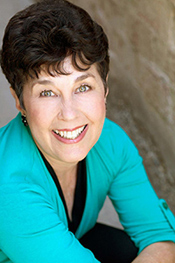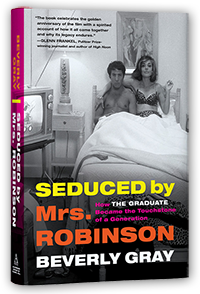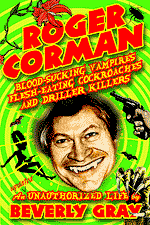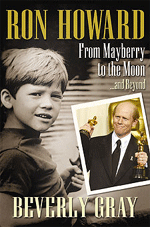Tuesday, September 6, 2011
Chicago: My Kind of Town
Citizen Kane is one of my favorite movies. So I well remember a pivotal moment when theatre critic Jed Leland – boggled by having to review the inept stage performance of his boss’s wife – announces his plan to exile himself from Manhattan and go work for a Chicago paper. To which Kane, indelibly played by Orson Welles, warns, “You're not going to like it in Chicago. The wind comes howling in from the lake. And there's practically no opera season at all. And the Lord only knows whether they've ever heard of Lobster Newburg.” To a consummate New Yorker like Charles Foster Kane, the Second City is no better than a hick town with particularly bad weather.
I know better. I’m just back from Chicago, a place of gorgeous weather (yes, I got lucky), great food, remarkable architecture, and civic pride that won’t quit. Chicago is the birthplace of the skyscraper, and I saw brilliant examples, both old and new. Public spaces like 2004’s Millennium Park, with its fanciful Cloud Gate and Crown Fountain, bring out exuberant crowds who seem to be celebrating their city ‘round the clock. I came away feeling that in Chicago architects and designers (like long-time area resident Frank Lloyd Wright) are heroes.
Funny thing: no one in Chicago seemed to be talking about gangsters. And that’s the aspect of Chicago life that Hollywood likes best. Movies featuring crime bosses modeled on Chicago’s Al Capone have been around since Little Caesar in 1931. Capone himself has been played by many big-name actors, especially those of the chew-the-scenery persuasion, like Rod Steiger (1959’s Al Capone) and Robert De Niro (1987’s The Untouchables). Even Some Like It Hot kicks off with a version of the St. Valentine’s Day Massacre: the musicians played by Jack Lemmon and Tony Curtis need to take up cross-dressing because they’ve seen too much and the mob is on their trail.
Some critics (though not me) consider The St. Valentine’s Day Massacre one of Roger Corman’s very best films. Certainly it was one of his biggest, made for Fox in 1967, and featuring a cast that included Jason Robards and rising star George Segal. It was written by Howard Browne, a former Chicago newspaperman. That film was before my time, but I was assistant story editor on the Corman-produced Capone (1975), made from Browne’s final screenplay. I’ll never forget Howard’s passion for Chicago and its history. Theatrical to the core, he announced that “I loved the city, the way you love a woman.” (By the way, in the showpiece scene in which cops raid a speakeasy, you might possibly spot me as a flapper swilling bootleg gin. Thanks again to director Steve Carver for saving me a place at the crap table!) I also worked on Concorde’s 1995 Dillinger and Capone, starring Martin Sheen and F. Murray Abraham. It’s based on Michael Druxman’s imaginative script, which posits that John Dillinger -- far from being gunned down in front of Chicago’s Biograph Theater -- secretly teamed up with Al Capone to plan one last job.
Needless to say, none of the Corman films was shot on location. But you can glimpse the real Chicago in movies as different as Backdraft (Ron Howard’s tribute to the close-knit fraternity of Chicago firefighters) and Ferris Bueller’s Day Off. The latter, sometimes described as John Hughes’ love letter to the city, highlights a puckish suburban kid who’s hankering for a Downtown Chicago adventure. On a sun-kissed day, who wouldn’t play hooky to frolic in a city like this one?
Subscribe to:
Post Comments (Atom)









Nice post, Beverly! AIP's DILLINGER (1973) has long been a favorite of mine. What was your opinion on Lewis Teague's THE LADY IN RED (1979) with Robert Conrad? Any stories regarding that one?
ReplyDeleteWelcome back, Brian. I've missed your comments. Now I've got to admit that I don't really have the inside scoop on The Lady in Red, other than that it was written by John Sayles, and it was produced by JULIE Corman, with Roger overseeing things, I'm sure. I know Julie appreciated the focus on the FEMALE aspects of the Chicago mob scene. And looking through the cast and crew list I see a lot of Corman regulars, like Dick Miller, Mary Woronov, and production design Jac McAnelly, with whom I worked on Big Bad Mama.
ReplyDeleteYeah, I've been really busy of late with work and other things so I am playing catch up at the moment!
ReplyDeleteRegarding LADY IN RED, I've only watched it once and have yet to upgrade to the recent double feature special edition paired with CRAZY MAMA. I did enjoy the approach the New World team took with this one. Quite different from the typical gangster formula.
I was mainly drawn to this one because Conrad was in it. WILD WILD WEST is one of my all time favorite shows whose four seasons get frequent replay in my DVD player.
Wonderful post, especially to this Illinois boy! (Yeah, the other end of the state, but I've certainly been to Chicago!) My favorite St. Valentine's Day Massacre story is how Mr. Corman offered Jack Nicholson a meaty supporting role, but one which only shot for a day or two. Mr. Nicholson, a pretty canny guy, looked over the shooting schedule and noticed something. He told the director which role he'd like to play. Mr. Corman asked why that one? He's only in a couple of scenes briefly and with only a few lines. Mr. Nicholson pointed out that the two scenes were at opposite ends of the shooting schedule, so the production would have to carry him on hold for the run of the shoot, resulting in much less time onscreen, but more money offscreen, which he needed. Impressed, Mr. Corman complied with his request. I find all of the gangster pictures Mr. Corman had a hand in very interesting, as these kinds of movies seem to lend themselves to the Corman Formula very well!
ReplyDeleteActually this situation, which benefited fledgling actor Bruce Dern as well as Nicholson, was a bit different -- at least, that's what Bruce told me. I'll have to fill you in one of these days.
ReplyDeleteThis comment has been removed by the author.
ReplyDeleteVery aoon I plan to tell this story, as Bruce told it to me.
ReplyDelete